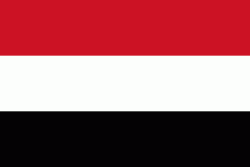`Amran (‘Amrān)
ʿAmrān (عمران; Old South Arabian: ???? ʿmrn) is a small city in western central Yemen. It is the capital of the 'Amran Governorate, and was formerly in the Sana'a Governorate. It is located 52.9 km by road northwest of the Yemeni capital of Sana'a, at the upper (southern) end of the al-Bawn plain. According to the 2004 census it had a population of 76,863, and an estimated population of 92,763 in 2013.
'Amran has a long history, dating back to the pre-Islamic era. During that period, it was one of the main centers of the Bakil tribal confederation. At the time of the Sabaean kingdom, the town blossomed into a fortress. A series of bronze plaques from that time were found in the town in the mid-nineteenth century and are now in the British Museum. In particular, in the seventh century it was the great city of valour during the clashes against the Sabeans, a plurality of regionally based tribes. Remains of carved stones that belonged to former temples and palaces bear witness today of past glory. A large stone inscription is found in the western city gate (Bab al-Kabir).
'Amran is largely absent from medieval sources, and the nearby fortified town of al-Jannat eclipsed it in importance during this period. This may have been partly because 'Amran, located in the middle of the al-Bawn plain on level ground, was less defensible, whereas al-Jannat had a more strategic location. The 10th-century writer al-Hamdani described the ancient palace at 'Amran, but he gives no details about its population or any indication that it was still occupied.
From the late 14th century onward, 'Amran appears to have emerged as a strategic site, and it appears frequently in historical texts such as the Ghayat al-amani of Yahya ibn al-Husayn during this period. Then, in the 1500s and 1600s, 'Amran is mentioned as a more generally important city.
ʿAmran is completely surrounded by walls which date to 1720. The surrounding landscape is dominated by terraced landscapes with stone walls to counteract erosion of fertile arable land. The old souq is noted for its stone columns.
'Amran has a long history, dating back to the pre-Islamic era. During that period, it was one of the main centers of the Bakil tribal confederation. At the time of the Sabaean kingdom, the town blossomed into a fortress. A series of bronze plaques from that time were found in the town in the mid-nineteenth century and are now in the British Museum. In particular, in the seventh century it was the great city of valour during the clashes against the Sabeans, a plurality of regionally based tribes. Remains of carved stones that belonged to former temples and palaces bear witness today of past glory. A large stone inscription is found in the western city gate (Bab al-Kabir).
'Amran is largely absent from medieval sources, and the nearby fortified town of al-Jannat eclipsed it in importance during this period. This may have been partly because 'Amran, located in the middle of the al-Bawn plain on level ground, was less defensible, whereas al-Jannat had a more strategic location. The 10th-century writer al-Hamdani described the ancient palace at 'Amran, but he gives no details about its population or any indication that it was still occupied.
From the late 14th century onward, 'Amran appears to have emerged as a strategic site, and it appears frequently in historical texts such as the Ghayat al-amani of Yahya ibn al-Husayn during this period. Then, in the 1500s and 1600s, 'Amran is mentioned as a more generally important city.
ʿAmran is completely surrounded by walls which date to 1720. The surrounding landscape is dominated by terraced landscapes with stone walls to counteract erosion of fertile arable land. The old souq is noted for its stone columns.
Map - `Amran (‘Amrān)
Map
Country - Yemen
 |
 |
| Flag of Yemen | |
It is situated on the southern end of the Arabian Peninsula, and borders Arabia to the north and Oman to the northeast and shares maritime borders with Eritrea, Djibouti and Somalia. Yemen is the second-largest Arab sovereign state in the Arabian Peninsula, occupying 555,000 km2, with a coastline stretching about 2000 km. Its constitutionally stated capital, and largest city, is Sanaa. As of 2023, Yemen has an estimated population of 34.2 million.
Currency / Language
| ISO | Currency | Symbol | Significant figures |
|---|---|---|---|
| YER | Yemeni rial | ï·¼ | 2 |
| ISO | Language |
|---|---|
| AR | Arabic language |















